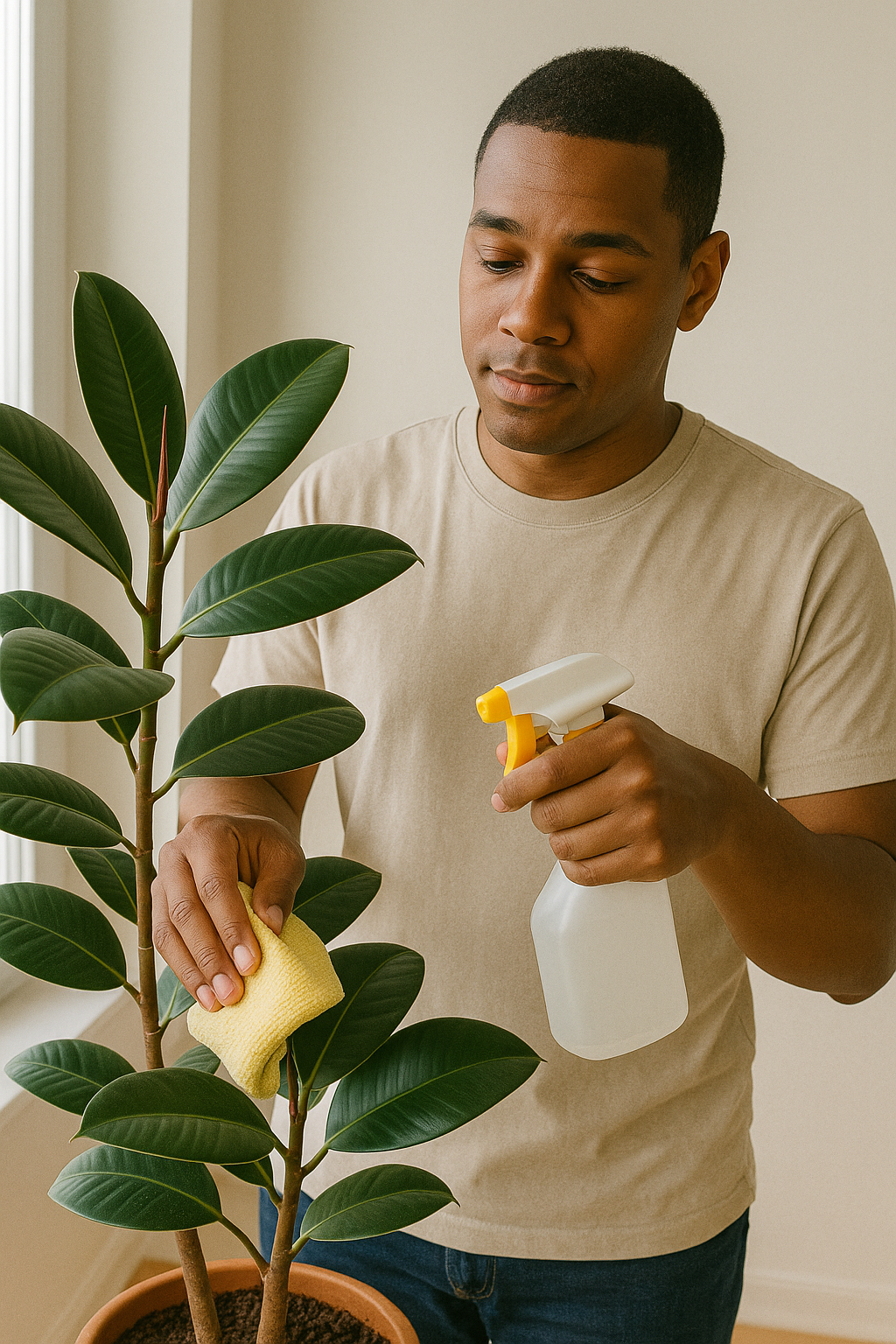Apartment plants bring beauty, freshness, and life into your space—but like anything else in your home, they collect dust. While a light layer of dust might not seem like a big deal, it can have a major impact on a plant’s ability to thrive. Dust blocks sunlight, clogs the pores of leaves (called stomata), and even invites pests or disease.
In this guide, we’ll explain why cleaning your apartment plants is essential, how often to do it, and the best techniques for different types of plants and surfaces.
Why You Should Clean Your Plants
Plants are living organisms that require light, air, and clean surfaces to stay healthy. Here’s what happens when dust accumulates:
- Blocked photosynthesis: Dust acts as a filter, preventing sunlight from reaching the leaf surface and limiting energy production.
- Reduced gas exchange: Plants “breathe” through tiny pores on their leaves. Dust clogs these pores, interfering with their ability to take in carbon dioxide and release oxygen.
- Pest attraction: Dusty plants are more prone to spider mites and mealybugs, which thrive in low-airflow, neglected conditions.
- Dull appearance: Dusty leaves can make even a healthy plant look sad and lifeless.
Keeping your plants clean not only supports their health—it also keeps your home looking fresh and vibrant.
How Often Should You Clean Apartment Plants?
The ideal frequency depends on your environment, but a good rule of thumb is:
- Once a month for most indoor plants.
- More often if your home is near a busy street, construction site, or you have pets or open windows often.
- Weekly light maintenance such as checking for dust and pests can help catch problems early.
What You’ll Need
Cleaning your plants doesn’t require fancy tools. Here’s a simple list:
- A soft microfiber cloth or old t-shirt
- A soft brush (paintbrush or makeup brush)
- Spray bottle with lukewarm water
- Bowl of clean water
- Mild dish soap (optional)
- Cotton swabs or Q-tips (for delicate cleaning)
- A shower or bathtub (for rinsing large plants)
Avoid using commercial leaf shine products—they often clog stomata and can damage your plant over time.
Method 1: Wiping the Leaves (Most Common)
Best For: Plants with large, smooth leaves like pothos, philodendrons, peace lilies, and rubber plants.
Steps:
- Support the leaf with one hand underneath.
- Wipe gently with a damp microfiber cloth, moving from the base to the tip.
- Repeat on both sides if needed.
- Rinse the cloth often to avoid spreading dirt.
This method removes dust effectively without damaging the leaf surface.
Method 2: Spraying and Brushing
Best For: Plants with many small leaves or textured surfaces like ferns, calatheas, or spider plants.
Steps:
- Lightly spray the plant with lukewarm water.
- Use a soft brush to gently sweep away dust from delicate surfaces.
- For stubborn grime, dip the brush in water and gently scrub.
Avoid over-wetting if your plant is sensitive to moisture.
Method 3: Rinsing in the Shower or Sink
Best For: Larger plants like palms, monstera, and ficus.
Steps:
- Place the plant in the shower, bathtub, or kitchen sink.
- Use a gentle stream of lukewarm water to rinse the leaves.
- Let the plant drain and dry completely before putting it back in its spot.
Tip: Cover the soil with plastic wrap or foil to prevent excess water from flooding the pot.
Method 4: Soapy Water for Sticky Residue or Pests
Best For: Plants with sap residue or mild pest issues.
Steps:
- Mix a few drops of mild dish soap in a bowl of water.
- Dip a cloth or sponge into the solution.
- Gently wipe down each leaf.
- Rinse with plain water to remove any soap residue.
This method can help remove pests like aphids or mealybugs without harming the plant.
Method 5: Cotton Swabs for Hard-to-Reach Areas
Best For: Plants with tight leaf curls, thick stems, or hairy leaves.
Steps:
- Dip a Q-tip or cotton swab in water or soapy solution.
- Gently clean tight corners or the underside of leaves.
- Use a dry swab to finish if moisture lingers.
Great for getting into crevices without bending or damaging the foliage.
Tips for Effective and Safe Plant Cleaning
- Never use cold water: Always use room-temperature or lukewarm water to avoid shocking your plant.
- Test any soap solution: Always spot test before applying to the entire plant.
- Be gentle: Avoid pressing or scrubbing leaves too hard—especially on tender or variegated varieties.
- Clean in the morning: This gives your plant time to dry before cooler evening temperatures set in.
Bonus: Clean the Pots and Planter Areas
While you’re cleaning the plant, don’t forget:
- Wipe down pots to remove mineral buildup or dust.
- Clean saucers and trays where mold and bacteria can form.
- Inspect for pests hiding around the soil line or in drainage holes.
This holistic approach keeps your indoor garden looking polished and healthy.
Final Thought: A Clean Plant is a Happy Plant
Cleaning your apartment plants doesn’t have to be time-consuming or complicated—but it makes a huge difference. Just a monthly cleaning session can improve your plant’s ability to photosynthesize, keep pests away, and enhance the look and feel of your home.
Think of it like self-care for your indoor jungle. After all, these green companions work hard to purify your air and lift your mood—it’s only fair to return the favor.
